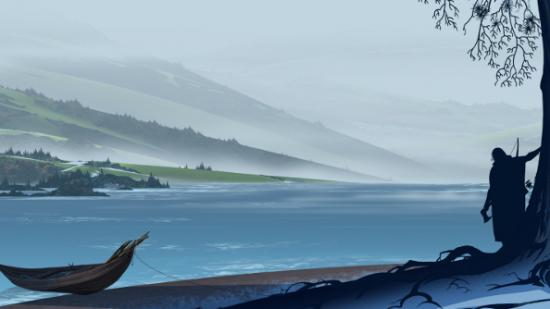Over two years have passed since a pair of miserable caravans fought and struggled their way across the world of The Banner Saga, facing starvation, betrayal, and the ever-present Dredge, a race of golem-like monsters. As The Banner Saga 2 returns to these survivors, however, hardly any time has passed at all.
Itching for more tactics? Check out our list of the best strategy games on PC.
The world’s still ending, you once again find yourself in charge of desperate, exhausted warriors and families, and the Dredge continue to nip at your heels. This is a sequel that hits the ground running – or at least moving as quickly as a caravan filled with tired, frightened people can – and doesn’t spend much time looking back.
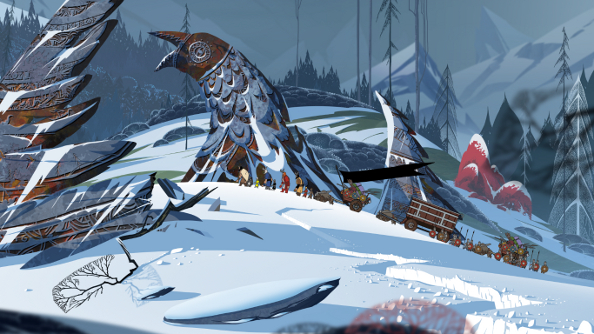
If you import your original save, you’re not just getting the impact of your decisions from the previous game, like who lived or died, but all your experience, skills and items as well. Despite a brief battle tutorial, it feels a little bit like starting in the middle of a game – and for me, as well as presumably many others, one that was last played more than two years ago.
It’s all a bit bewildering at first, being flung in the deep end full of archers and spearmen and massive axe-wielding Varl. If it wasn’t for the short biographies attached to each character, I would have been hard-pressed to recollect more than a few. And for each of them, there are items, stats and skills – the results of choices I’d made and battles I’d fought way back in 2014 – to stare at, wondering what it all means.
While this does make for an unorthodox beginning, by eschewing the traditional fresh start that often accompanies sequels, including those where major decisions are carried over, The Banner Saga 2 is able to fling players into more tactically interesting battles straight away. Obstacles, special objectives and a wider range of enemies – from stealthy, scuttling monsters to the centaur-like Horseborn, who like to smash faces with their nasty hooves – introduce a variety to the battles that was missing from its predecessor.
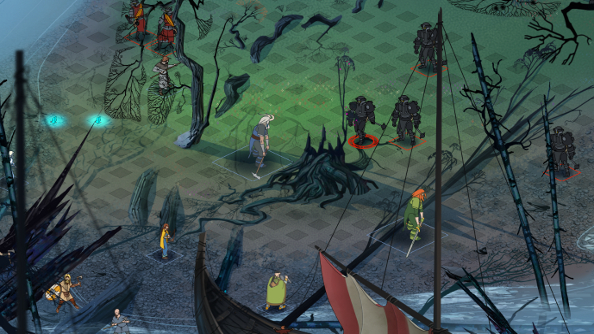
Fights remain turn-based, with ragtag groups of warriors stabbing, slashing and smashing their way through enemy armour and health, the latter of which again doubles as strength. This time, though, they start off tough, fat with experience and loot, and there’s also the promise of extra abilities and new skills that allow for a bit of specialisation after a few successful scraps.
Each battlefield offers limited space, made even more precious by the inclusion of obstacles and gaping holes in the ground, and larger allies and enemies take up more than one square. It gets messy. Controlling these temporary arenas means using that oh-so-horrible term: synergy. Enemies can be forced into archers’ traps by other warriors, characters can use an ability to push an ally up the initiative chain so they can kill an enemy before they get a sword through the gut, and poets can transform almost dead heroes into deadly glass cannons just with some words of encouragement.
I was favouring brute force in my first few battles, and found myself just scraping through. I was seduced by big muscles and horns when I should have been making the most of my squishier warriors. On their own, they can’t do much, but when partnered with another, a box of extremely handy tricks opens up.
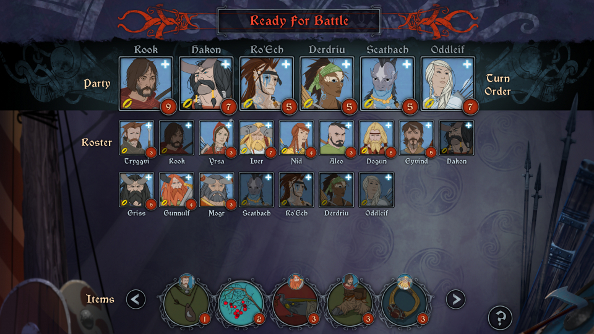
Most of the warriors were already veterans before the first game, but now that veterancy is better reflected in their combat ability. That doesn’t mean they cleave Dredge in half in one great hit, however, because enemies are likewise stronger and more numerous. The cheek. Additionally your battle objective might not even be ‘kill everyone’. The task might be to hold off enemies while other members of the caravan create an escape route, or taking out a specific enemy might cause the rest to rout.
The stakes of each battle are frequently distressingly high, as they’re almost all weaved into the narrative. You might be fighting a one-time ally or desperate survivors just trying to protect what’s theirs, defending refugees from a chasing army, sacrificing people to save the rest – a fight is hardly ever just that, and victories can sometimes feel pyrrhic and come with a great cost, like injured warriors and lost members of the caravan.
Misfortune looms over the game like an oppressive fog. As the caravan, which splits into two early on, makes its way across rivers, swamps, forests and ancient underground paths, crises, arguments and attacks break up the gorgeous vistas the accompany the journey. Some of these crises are evocative of the choices you’re asked to make in the first game, like deciding to help a band of refugees by giving them supplies or even inviting them to join you, at the risk of them betraying you later. But everything is more desperate in The Banner Saga 2, and the choices harder to make.
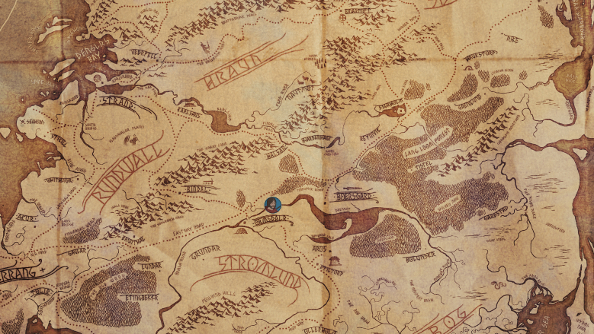
It’s very tempting to be pragmatic when faced with the small stuff, like keeping supplies just for the caravan so that morale remains high and nobody starves, but it becomes much harder when the pragmatic option isn’t ignoring some refugees but letting hundreds of your own people die so you can save even more. Harrowing decisions like that, where the weight is crushing, are not uncommon, or even relegated to the latter part of the game. The Banner Saga 2 gets right to the gut-wrenching dilemmas.
Rarely are choices binary, and there are no clear right or wrong responses, nor good or evil ones. You might feel like you’ve just committed to something awful, made a call that’s ended countless lives or resulted in the loss of vital supplies, but at those low points the game often offers reminders of the good things that can come from terrible decisions. A critic begrudgingly acknowledging your leadership. One of the clansmen thanking you for saving their family. The knowledge that, above everything else, the caravan continues to survive.
Forks in the road are so frequent and options so myriad that The Banner Saga 2 starts to feel less like a Choose Your Own Adventure and more like a brutal leadership sim. It’s more than resource management and combat; you’re crafting two leaders out of the terrible calls they have to make. And they’re not at all alike.
Rook (you might get Alette depending on how your version of the previous game finished) is trying to lead his refugees and warriors to safety, and it’s his nature to be merciful and generally helpful. Bolverk, on the other hand, is a berserker Varl and the leader of a band of mercenaries. Fighting and coin is all they’re really interested in. While Rook can be pragmatic and Bolverk can be selfless, it’s not their natural inclination. Importantly, though, both have already gone through plenty of trials by fire and come out the other end stronger and more influential. They are established leaders, opposed to Rook and Hakon in the first game, both having had that status thrust upon them.
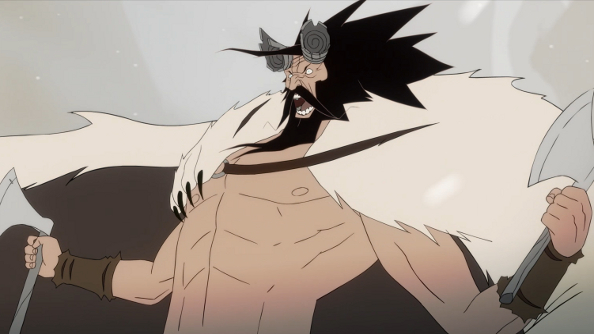
I worry that they might not be very good leaders, though. Well, I know that in my case they weren’t, as it seemed like I couldn’t stop making choices that ended in a trail of corpses being left behind by my caravans, but the larger issue is that they both go by their gut. They don’t really have a choice, either. It’s nearly impossible to predict the outcome of a decision, because they are never accompanied by any important information. Occasionally another member of the caravan will weigh in, but most decisions need to be made with only a brief text description for guidance.
More information isn’t always necessary if the options are lose a bunch of supplies or lose a bunch of clansmen, but most crises aren’t even remotely that clear cut. Being forced to go on instinct (and maybe a bit of common sense) does give the game a greater sense of haste, however, emphasising the lack of time there is to spare when armies and serpents and earthquakes are bearing down on you. I just wish that, even once, Rook could say, “Hold on there. I’m going to give this some serious thought, explore my options, and get back to you after a short nap.”
While I managed to get through the first game with minimal loss of life, at least when it came to the named characters that make up the roster of warriors during the tactical battles, The Banner Saga 2 has seen me abruptly bid farewell to several allies when I sent them off to their accidental deaths. They can’t die in player-controlled battles, but outside of them, they’re fair game. It got to the point where I was extremely concerned that even telling them they could use the loo would ensure their demise.
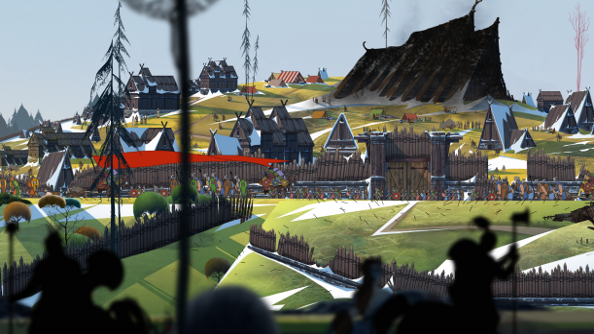
The very real risk of losing several valuable characters is rather daunting, but there are so many of them that they do feel a bit interchangeable. Aside from a few key characters, most named members of the caravan get a couple of lines, even ones that have been in the group since the first game. Those key characters aren’t safe from the spectre of death either, though, and if they end up in the digital afterlife, their absence can throw a spanner or two in the already rickety works. There’s hardly a moment where the caravans don’t seem ready to tear themselves apart, so even the loss of some beardy bloke who you’ve only spoken to twice can feel like a major blow.
Refugees get left behind, heroes die, but amid all the misery and gloom is this vast array of gorgeous backdrops. Huge, imposing things that make the little caravans seem terribly vulnerable, multicoloured forests the call to mind more fantastical settings, and colossal statues of now-dead gods that dwarf the people investigating them. Even when the vista is intimidating, even when the caravan is deep underground, rooting around in the dark, the view is constantly striking.
Accompanying the caravans on their journey across the towering mountains, damp swamps and magical forests are warrior songs, the rousing music of battle, and the din of warhorns. Austin Wintory’s stirring soundtrack feels like it belongs to warriors, refugees and mercenaries, haunting them one moment and firing them up the next.
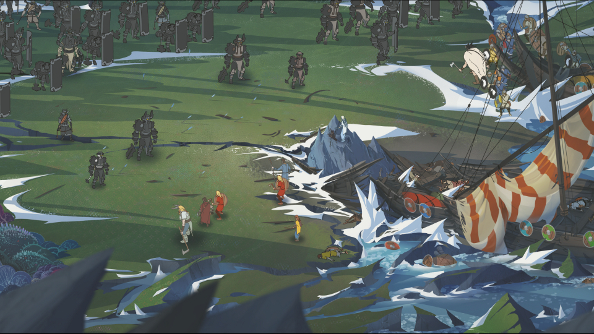
Despite the tough choices, and the alarmingly high number of people I failed to save, The Banner Saga 2 feels a little easier going in some regards than its forebear. The battles are perhaps trickier thanks to the addition of more abilities and battlefield obstacles, but managing the caravan is less of a struggle. Like the first game, renown is the big daddy of the game’s resources. Items, supplies to keep the caravan fed, levelling up – they all cost renown, which you mostly get from combat.
In The Banner Saga, bad luck could leave you with no supplies, a starving caravan, and no renown to fix the problem, but now the caravan is a little less helpless. If there are clansmen, for example, they’ll periodically forage for supplies, freeing up renown to be spent on items and skill ranks. There are also more opportunities to gain renown, like completing training challenges. An influx of new survivors or a bandit attack can still put a strain on the supplies, and renown is still scarce enough so that shopping sprees are unlikely, but it no longer feels like bad luck is enough to make it a slog.
The Banner Saga 2 captures much of what made the first game such a compelling fight for survival. It has a tendency to focus on the bigger picture and with the large number of characters that don’t have much to say, some of the emotional engagement from the original is lost, but both the management side of things and the tactical battles have been lavished with improvements. The journey is bleak and savage, but the game is great.
